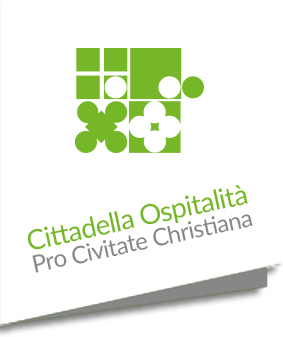S. Rufino (St. Rufinus), Bishop of Assisi and Martyr
Those who arrive in Assisi for the very first time may think that the Duomo of the city is actually the Basilica di S. Francesco, but the truth is that this last one is a “new” church.
The Cathedral Church is actually the one of S. Rufino, main Patron of the Diocese, revered as the first bishop of the city. The cathedral is dedicated to him from the first half of the XI Century.
According to a ‘Passio’ written in the IX Century, Rufino (Bishop of Amasia nel Ponto) came to Assisi to preach the Gospel during the III Century. After some time, he was captured by the proconsul Aspasio who, after torturing him, sentenced him to death because of his Christian faith: Rufino was thrown into the waters of river Chiascio, with a stone tied to his neck. An ancient tradition indicates that the site of his martyrdom is “Costano of Assisi”, now part of the municipality of Bastia Umbra – located on the bank of the river. A parchment from the Archives of the Cathedral recalls that back in 1038 the village of Costano had a church dedicated to the martyr. According to a plaque preserved in the left aisle and to a document of the Archives dated 1007, Rufino’s body was moved from Costano to Assisi in 412, right in the place where now stands the Cathedral built by the faith of the people of Assisi and by the architect Giovanni da Gubbio.
Description
The Cathedral church is actually the third church rebuilt on the tomb of the Martyr Bishop. Originally built in the VII Century on the ruins of a Roman temple dedicated to Cerere (Ceres), it was reconstructed for the second time in 1036 upon the will of the Bishop Ugone, who also gave it the title of Cathedral. According to S. Pier Damiani – 1052, the remains of S. Rufino were contended between Bishop Ugone and the citizens: The first wanted to move the Saint’s body inside the then Cattedrale di S. Maria Maggiore, but the citizens firmly opposed to his purpose. Finally, a “tug of war” competition established the winners: only 7 men of Assisi managed to beat 60 men of the Bishop. After the miracle, Ugone decided to radically transform the primitive, little Basilica where the remains of S. Rufino had been preserved since 412.
With the third and new reconstruction, the church took the forms in which we see it nowadays; the works started in 1140 directed by Giovanni da Gubbio, but only in 1253 it was consecrated by Pope Innocenzo IV.
The funnel-shaped churchyard creates a magnifying glass effect for those who observe it from the square; the austere and majestic façade with its three portals and three rosettes is a masterpiece of the Umbrian-Romanesque style: the lunette above the portal preserves the oldest sculpture of S. Rufino, which dates back from the XII Century. Beside it, we can esteem the imposing bell tower with double lancet windows, erected with the aid of a perfectly preserved Roman cistern. The interior, with its three naves divided by pillars and a basilica-type layout, was completely renovated in 1571 by Galeazzo Alessi; the ancient baptismal font is placed at the beginning of the right aisle (according to tradition, S. Francesco and S. Chiara were baptized there, and perhaps also Federico II – Holy Roman Emperor – in 1197). On the right side there is also the Cappella del Sacramento (Chapel of the Sacrament) of 1663, a Baroque composition by Giacomo Giorgetti based on the theme of the Eucharist, the most organic Baroque environment in Assisi. In the apse, there is a magnificent wooden choir, carved in 1520. The maximum aesthetic appeal is probably offered by the crypt, accessible from the right-side of the façade: here are placed the remains of ancient marbles and paintings from the first half of the XI Century, an Episcopal Chair and a 3rd Century Roman sarcophagus which houses the body of S. Rufino.
Celebrations
On the evening of the Holy Thursday – the first day of the Easter Triduum, the Cathedral hosts the traditional rite of “Scavigliazione” (i.e. Deposition of the Crucifix), inspired to a XIV Century lauda on the Passion of Christ during which a wooden crucifix from the XV century is exposed for veneration. On the morning of the Holy Friday, the Crucifix is transported – with short stops in the cloistered monasteries along the way – to the Basilica di S. Francesco, to stay there until evening; then, in a suggestive nocturnal procession, it is brought back to the Cathedral, accompanied by all the confraternities of the city.
Since the XI Century the celebration date of S. Rufino has been August 11th, but a Bishop’s decree postponed the Feast to August 12th (because it overlapped with the celebrations for S. Chiara).
